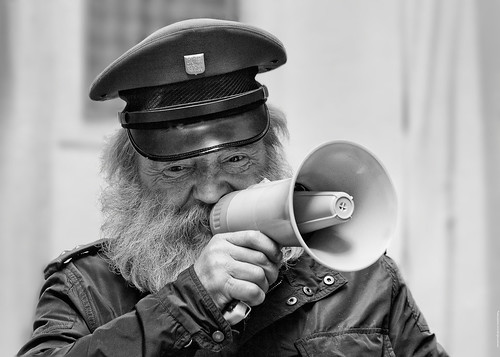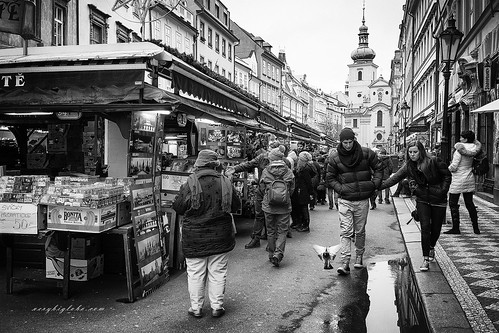Tagged: Sony Batis 85/1.8, Sony FE 35/1.4, Sony FE 35/2, Viktor Pavlovic, Which lens? best lens for street, www.verybiglobo.com
This topic contains 8 replies, has 4 voices, and was last updated by verybiglobo 4 years, 5 months ago.
-
AuthorPosts
-
35 1,4 and batis 85mm …. Do you think that’s all Il need for a street, landscape, people, architecture, travel ?
Thanks
ps: My first post here, btw I am from Sweden, you know who I am 😉
Hi and sorry for the late reply.
Yes I guess I know who you are, thank you for moving discussion here.
Regarding your question – I can only give some general advise, coming from my own experience.
1. I tend to shot street with lenses wider than 50mm.
When I started to shot street, I opted for tele lenses and was trying to capture people at a distance, not letting them to know that they have been captured. This approach was close to certain kind of voyeurism, and I had similar feeling as being a hunter who is targeting deer at a distance. It was fun shooting, but results were… dull. Faces, without context, people without name or reason to be captured.


2. I have many friends which are way better street photographers that I’ll ever be. Most of them practice shooting from the hip, and very few of them are using AF. They are usually using lenses of around 35mm and even wider. One of those guys I believe never used anything tighter than its Ultron 21. Instead of AF, most of them still relies on hyperfocal distance calculations or they simply estimate distance matching the scale on the lens. Huge practice and experience is the only way to be successful with guesstimation, but I am sometimes shocked how sharp they can be, using that method. However, none of them consider sharpness as the key factor of successful image. Street is very much about capturing the moment, and slight motion or subject blur, usually ads dynamics and realism in the image.
3. My favorite daily street lens is Sony FE 35/2.8. Used on Sony A7 MII, I have stabilization to help if needed and the whole setup is very light and compact. FE 35/2.8 vignettes a lot and is far from perfect lens, but it has very good contrast and nice color interpretation and it behave quite well in back-light. I use it mostly with single shot AF settings on Zone AF area.




My favorite night street lens is Voigtlander 35/1.2 II. While DOF is ridiculously thin, I usually have more time in night to compose and focus, because people tend to ignore me.


4. If you are planning to use 2 lenses, I would suggest to consider using same lens line. Zeiss is keeping their colors within one line usually very consistent and that makes final result more harmonic (when you present shots from 2 or more lenses). If you go for Batis 85/1.8, maybe you want to consider Batis 25/2. I don’t have much experience with FE 35/1.4, there have been several reports complaining about QC, but if you manage to get good sample, I guess it will be stunning performer. However, it is very big and heavy and I am sure that very few street photographers will choose it because of that.At the end, you might consider first to find, which focal length works best for you. For that purpose, it is ideal to use kit lens (or other cheap zoom) preset (and fixed by tape e.g.) at some focal setting for a day, two or a week. This should give you very good idea, which focal lengths your mind prefer, as there is quite some difference between 25,28,35 or/and 50mm.
I tried to cover street photography here, but your question was much broader. For landscape you might need something wider from time to time Loxia 21/2.8 comes to mind. (Or even longer. One of my friends, great landscape photographer is shooting exclusively with 300 + mm lenses.) For architecture, you would definitely need something wider. Architecture works very well with UWA lenses, such as 14-18mm (but you need time to learn how to use that FOV), for travel you might want most compact but powerful zoom that you can find, something like 24-200.
Reviewing lenses for some time now, I can only say, that good lens can certainly improve technical quality of the images, but none of those lenses, including Otus, ever helped me to make better image content wise. Learning about composition, lighting, talking more to people subjects, investing in workshops and traveling, were way much useful in that regard.
Cheers,
ViktorThank you Viktor, very thorough answer, I wish I could get answers like this always 🙂
One more thing: I like lowlight photography (not only) and in that matter I know a7s is good lowlight performer, but on the other hand a7ii has better dynamic range, what do you think ?
Is there any chance that you can explain (more simplify explanation) in regards how alpha series (a7, a7ii, a7r, a7rii, a7s, a7sii) are and what would be best one for a every day in the hands of an amateur enthusiast?
Once again thank you
Hi,
best one for every day photography would be certainly Sony A7r MII (recently). It can do most of what other bodies are capable of and something more. For photography, high ISO performance of Sony A7S (and A7sii) is very similar of what Sony A7r MII can do, downsized to 12mpx.In video, Sony A7s and A7sii will have some edge in high ISO from approx. ISO 3200, but A7r MII will hold well up to ISO 12800 and there about. It has best AF from all A7x bodies IMHO, it has highest resolution which is not only great for super large prints, but also for extensive cropping when needed.
Another nice camera for everyday use is A7 MII which except 4K video, ISO above 6400 and ultra high resolution has most of the features of A7rii for significantly lower price.
For video, A7s and A7s MII have quite some benefit, mainly due to the larger pixel size, allowing light to be more efficiently collected. Difference between those two is mainly in the ability to record 4K video internally (A7s needs external recorder for 4K video).
Sony A7r is brilliant value as a landscape camera that will be mostly used from tripod or in situation where careful composing and setting is not a problem. At barely 1200 USD (for good condition used bodies) it benefits from a very capable sensor, but it lacks in almost every other regard.
Sony A7 original is still very capable and versatile camera, that at recent price point represents most affordable entrance ticket to the Sony A7x family.You can hardly make anything wrong choosing any of those cameras, unless you start to think about money. Buying A7r MII will not only set you back for some 3K USD, but you’ll need top quality lenses to fulfill its sensor potential e.g. Also value depreciation will be probably highest in total amount considering its starting price.
All the best,
Viktor-
This reply was modified 9 years, 1 month ago by
 viktor pavlovic.
viktor pavlovic.
Thank you Viktor
Video is not interesting at all for me. I am interested in photo and photo only.
I’m thinking of a7ii or a7rii, but as a amateur enthusiast I think maybe a7ii is better (money wise), only thing that I am thinking of is dynamic range and low light ?Best regards
Hi,
Sony A7Mii is very good camera and its dynamic range shouldn’t limit anyone. High ISO is not great but not bad either. I think that you’ll be satisfied with it (until Mark III doesn’t come :-))Chees,
ViktorThank you 🙂
A7Mii is a really good camera in my opinion. High ISO is really usefull but I’d recommend buying some good lens for it… depends what you need, I also use Sony FE 35/2.8 and it is amazing, with high ISO it works well even at night, but some 1.4 lens is also compulsory.
verybigloboSymptoms of a Heartbreak by Sona Charaipotra – 9781250199102
-
This reply was modified 9 years, 1 month ago by
-
AuthorPosts












